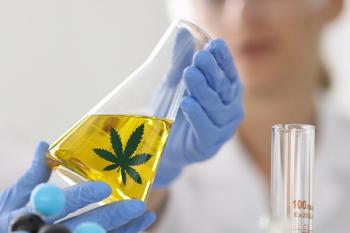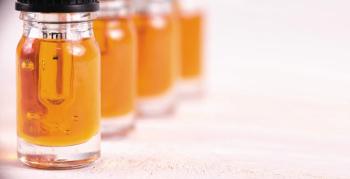
Our sister publication, LCGC, recently covered updates on the new mobile HPLC system for cannabis analysis selected by the Food and Drug Administration.

Our sister publication, LCGC, recently covered updates on the new mobile HPLC system for cannabis analysis selected by the Food and Drug Administration.

Citing a lack of studies on CBD concentrations in products available to consumers, this study tested a larger range of sample products than previous studies.

A review of the concept of separation factors and a discussion on developing a method for measuring peak width including triangulation followed by the introduction of the concept of chromatographic resolution for a pair of peaks.

The current challenges and future perspectives of the purification of cannabinoids from cannabis extracts are presented in this review article.

Part IV of this series discusses the capacity factor of chromatographic peaks to calculate separation factors, whose value tells us how well two peaks are or aren’t separated. We then introduce the reality of peak widths and how they impact separation quality.

Part III of this series will delve into understanding how to optimize methods for chromatographic separations, Smith will also introduce the concepts of capacity factor and selectivity.

Part II of this series looks at the mechanism via which molecules move through HPLC columns and leads us to a discussion on the equations used to characterize separations.

The final part in this series of pitfalls to avoid and practicalities covers the importance of cleanliness, how many standards to run, how to spot outliers, and important experimental variables to control.

The third part in this series of pitfalls to avoid and practicalities to know about discusses the importance of validating and checking your calibration to ensure quality.

Part II of this series discusses how to measure absorbances properly, and compares the use of peak heights and peak areas in creating calibrations.

In the work presented here, the authors evaluated the effects of variable red-light exposure on the phytochemical content of four Group III cannabis cultivars.

Here we discuss the importance of using standards that bracket the expected concentration range of standards in the unknowns, using the same chemical components in standards and unknowns, and making sure to minimize the error in concentration measurements of standards.

This article investigates the chiral method development screening for the enantiomeric separation of synthetic CBD on polysaccharide-based chiral stationary phases with both normal-phase and reversed phase mobile phases, using HPLC and UHPLC.

Part III discusses more on Beer’s Law and why absorptivity is important along with some of its advantages and limitations.

In part II of this series, we establish the physical basis of Beer’s Law and derive it from first principles then wrap up with a discussion of how the assumptions made in the derivation affect Beer’s Law experiments.

In this introduction to Beer’s Law, we review its use, history, and begin to cover the theory behind the equation.

This study focuses on a step-by-step optimization of commercial scale preparative HPLC purification of cannabinoids, specifically cannabidiol, starting with stationary reversed-phase screening, followed by method optimization.

A discussion on the selection of a “golden” potency method including what this method should look like, how we should go about choosing it, and more.

This technical piece is focused on the separation of the individual enantiomers of each compound mentioned above, as well as the combined separation of the compounds from each other for a fast, reliable quantification.

A systematic literature review to identify and compare analytical methods used for the determination of cannabinoids in different matrices using LC-based systems.


A primary impediment to cannabinoid research is the fact that materials possessing psychoactive Δ9-tetrahydrocannabinol (THC) are considered Schedule I drugs as defined in the U.S. Controlled Substances Act. An alternative source of cannabinoids may be found in hemp oil extracts. Hemp contains a low percentage of THC by weight but relatively high amounts of nonpsychoactive cannabinoids. The liquid chromatography–time-of-flight mass spectrometry (LC–TOF-MS) method presented herein allows for the accurate, precise, and robust speciation, profiling, and quantification of cannabinoids in hemp oil extracts and commercial cannabinoid products for research and development laboratories. The method was determined to chromatographically separate 11 cannabinoids including differentiation of Δ8-tetrahdrocannabinol and THC with excellent linear dynamic range, specificity, and sensitivity.

Well-established techniques used by the food safety industry, such as QuEChERS sample preparation followed by LC–MS/MS for the analysis of multiresidue pesticides, are evaluated for use with cannabis plant material.

Compact mass spectrometry, in combination with suitable sample introduction techniques-such as the atmospheric solids analysis probe, thin-layer chromatography, and classical liquid chromatography techniques-can be used effectively for the detection and quantification of cannabinoids and pesticides in cannabis-related material and contraband.

An investigation of C18 and phenyl-hexyl column chemistries for definitive identification of 13 synthetic cannabinoid metabolites in patient samples.